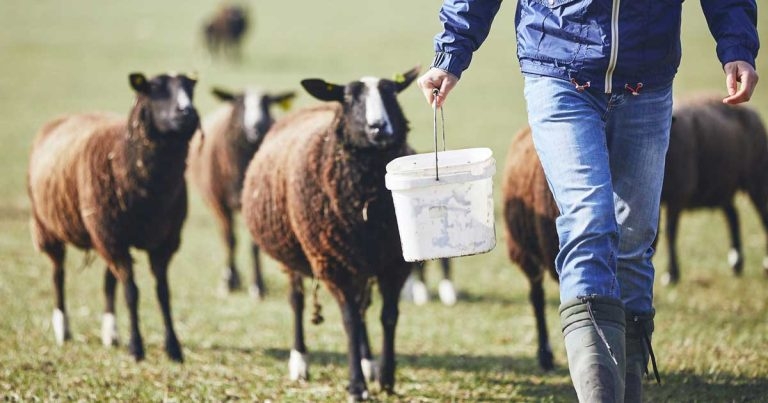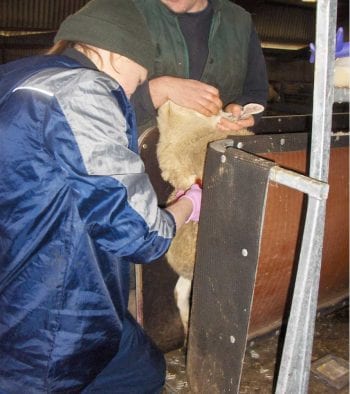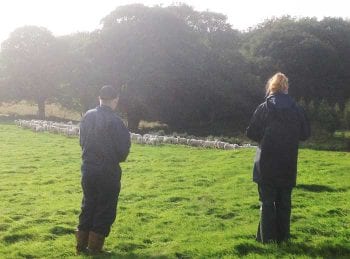4 Nov 2019
Valentina Busin discusses how both vets and sheep farmers can prioritise to help ensure a well-planned lambing experience.

Image: chalabala / Adobe Stock
Like everything in life, preparation is key. Plan, plan and plan some more – and when it comes to the most stressful, yet most significant, time of year then this is even more important.
The whole farming cycle is built on having as many healthy lambs as possible, with properly looked after ewes.
We are well aware of that, so the challenge is to prove to our farming clients the importance of a well-planned lambing time and share with them what the crucial aspects to focus on are for the maximum rewards. If you can take them on board at this stage, you have been truly successful.
Furthermore, being ahead of the game by starting early and getting organised before the mayhem of lambing will considerably reduce the stress associated, and allow the chance to really engage in those crucial areas.
A good point to start pre-lambing preparation would be around mating time. A bit further ahead, but still giving enough time to get ready and make some changes, is around scanning.
Try, if possible, to link any type of discussion or intervention around some key events, either as they offer the opportunity to discuss performances or because the farmer is able to take a moment from other jobs to concentrate on the issue you would like to discuss. Choosing the right moment to start the conversation is as important as the topics you would like to cover.

Lambing is a major challenge for the newborn as much as for the mother. Ewes need to be ready to face such a challenge by being properly fed and looked after. Body condition score of ewes throughout the year should be encouraged, but in particular before mating, at scanning and before lambing, with different targets according to the production type and the time of year1.
Since the final six weeks of pregnancy are the most crucial, take this opportunity to explore how ewes were managed in previous years and plan what areas might need some input. For example, a follow-up visit could be suggested to assess the nutritional balance three to four weeks before lambing starts (Figure 1).
To provide the necessary antibodies in colostrum against clostridial diseases, ewes need to receive their annual booster four to six weeks before the start of lambing, with consideration in vaccinating ewes at different times according to their lambing date, if the lambing is particularly extended5.
The main issue is to combine yearly boosters with those animals entering the breeding flock, which might have never been vaccinated before and would therefore need two full doses of vaccine two to four weeks apart (depending on the brand used).
When advocating vaccination, make sure the farmer is aware of these constrains and can plan the sourcing of the vaccine, as well as the timing accordingly.
Be prepared, as worming could be quite controversial. Your client might be in the habit of routinely dosing all ewes at mating, and this practice should be really discussed in the face of increasing anthelmintic resistance, the lack of significant effect on the ewes’ performances and the evidence behind the benefits of leaving animals untreated6.
Without being too coercive, this is the right time to discuss anthelmintic treatment with your client, as he or she may not be aware of the reasoning behind our advice or may have simply carried out the same protocol without question for many years.
A different concept is the routine treatment around lambing time to reduce the impact of the peri-parturient egg rise on pasture contamination; however, this model should also be reviewed in light of the actual benefit of this practice on the lambs’ performances7. This would need even more careful planning (and probably a whole article in itself), but again, it represents the right moment to bring up the subject, and start discussing the different options and solutions available.
Liver fluke treatments should also be considered at this time of the year, again both in light of the increasing reports of triclabendazole resistance8, as well as because of the complex epidemiology of this disease, where yearly revision based on disease forecast should be encouraged.
Other routine treatments will include other vaccinations, depending on the specific diseases on farm, such as those against orf and foot rot. One crucial point to make here is the importance of the methods used for vaccination, as demonstrated recently by orf vaccination often being carried out incorrectly across UK sheep farms, with likely effects on the vaccine’s efficacy9.
The value and necessity of mineral and trace elements supplementation should also be considered at this time, depending on what has been done in the past and whether this was backed up by diagnosed deficiencies. Finally, other routine procedures, such as shearing or crutching, could be discussed.
Things are most likely going to roll on from previous years, so the crucial discussion here is if any major changes in the farm have occurred (for example, increased/decreased number of ewes, change of breeds, labour inputs and level of expertise).
While most of us are not expert builders, discussing the importance of well-designed (ideally 6ft × 3ft or 4ft × 4ft) and hygienically kept individual lambing pens is crucial, as well as making sure a reasonable number is available according to the flock size (ideally 1 per 10 ewes).
If lambing is outdoors, it should be in a clean, sheltered and easily accessible field. Careful shepherding, especially in the face of the general reduction in labour inputs, is paramount. Assessing how spread the lambing will be, who will be available and what level of expertise they have, and who will be in charge of the sick lambs are all important to discuss in advance of lambing season.
Last but not least, this is also a good opportunity to remind your clients of the zoonotic potential of many sheep diseases. It is our duty to protect public health and ensure clients are aware of the serious consequences of some diseases (primarily enzootic abortion of ewes) for pregnant women, and plan accordingly to avoid any pregnant women coming into contact with lambing sheep, clothing and equipment used for lambing, or live vaccines10.

The buzzword of the moment is probably knowledge exchange (KE). KE means academia, industry, policy and the public coming together to share knowledge, and make a positive and tangible contribution to what happens in practice. The key concept here is exactly in the sharing of knowledge, rather than passively dictating what to do (Figure 2).
As vets, we should not be trying to educate or force our knowledge on others, but really understand what the needs are and work in collaboration with clients to help them achieve their goals11. KE activities can take different forms and shapes, such as evening talks, workshops, websites and social media presence, newsletters, laminated fact sheets, and collaboration on research projects and creation of focus groups.
What we need to know, in the first instance, is what the clients are looking for and what would be the best method to exchange this knowledge. All these activities can be very rewarding, as well as providing an alternative to our daily routine, and something that should be encouraged and rewarded accordingly.
In cases of pre-lambing preparation, an evening meeting, a half-day workshop or simply having a display in the practice and some leaflets (maybe linked to a social media page and practice website/newsletter) are all great ways to engage your clients.
Depending on the level of engagement with clients and their previous experience, some suggested topics would be as follows.
There is nothing like a nice, shiny laminated sheet listing all the must-haves for lambing. This is the opportunity for you to be creative and bring out your artistic side. Make something simple, but catchy – a handout that you can give and maybe a “sample pack” with all the listed supplies.
Experienced farmers might not need any of these, but, again, they might be interested in finding out if they are missing something or seeing it exposed well in advance before lambing might make them question you about it (a bit like seeing Christmas decorations before Halloween).
A suggested list will have all the following basic and essential equipment in it (plus anything else that might be appropriate for your clients or practice):
Something else to consider is a separate box with all the necessary therapeutic items in it. Apart from a list of useful items, our role here is to make sure medicines are properly stored and, once open, are kept according to the manufacturer’s instructions.
Useful items in this case would be:

A lambing workshop is a fantastic way to engage with farmers, as well as being great fun to run. Different ways to deliver one exist and, again, it depends on what feels more comfortable to who will be running it and what clients are looking for. Ideally, it should be tailored to different levels of experience, so try not to mix experienced farmers with smallholder/hobby clients.
Something practical is always good, with a top favourite being a hands-on correction of common malpresentations to practical procedures on how to stomach tube lambs or perform intraperitoneal injections. You would need to prepare or borrow a lambing model (Figure 3) and either have a source of dead lambs or have them stored frozen from the previous year (logistically, that is probably the biggest challenge).
Although these workshops should run close to lambing, start planning in advance by setting a date in the calendar and advertising it widely, with a proposed list of topics covered and who will be delivering them. Also, have a rough idea of how many clients you can comfortably accommodate.
At this time of the year, there can also be thematic workshops related to the aforementioned important topics (worming, vaccination and so on). For these workshops, a mixture of presentations, discussion groups and practical exercises are always well received, with plenty of food and drink making it a successful event.
So, why should farmers spend their time planning so much in advance and for something they might have been doing since they can remember? The answer is because from one of the most stressful, difficult times of year, they will get a positive and rewarding experience as long as everything is in place before it all kicks in and common practices are reviewed regularly, to account for differences within years or with a view to improving the performances of the flock.
First of all, engage with your clients to find out what their goal is and what you can do to help them achieve it. At the end of the day, the profitability of most of our farming clients depends on how many lambs they can produce, but each of them will have different opinions and resources. Planning together will make sure lambs are born alive and stay alive, for everyone’s benefit.